Contents
Figures
Tables
Registers
Timing Diagrams
Preface
Feature Summary
1 Introduction
1.1 Company and Product Background
1.2 Data Pipe Architecture Technology
1.2.1 High-Speed Data Transfers
1.2.1.1 Direct Transfers
1.2.1.1.1 Direct�Master
1.2.1.1.2 Direct�Slave
1.2.1.2 DMA
1.2.1.2.1 DMA Block Mode
1.2.1.2.2 DMA Scatter/Gather Mode
1.2.1.2.3 Hardware DMA Controls— EOT and Demand Mode
1.2.2 Intelligent Messaging Unit
1.3 PCI�9056 I/O Accelerator
1.3.1 Applications
1.3.1.1 High-Performance Motorola MPC850 and MPC860 PowerQUICC Designs
1.3.1.2 High-Performance CompactPCI Adapter Cards
1.3.1.3 High-Performance PCI Adapter Cards
1.3.1.4 High-Performance Embedded Host Designs
1.4 Major Features
1.4.1 Interfaces
1.4.2 Data Transfer
1.4.3 Messaging Unit
1.4.4 Hosting Features
1.4.5 Electrical/Mechanical
1.4.6 Miscellaneous
1.5 Compatibility with Other PLX Chips
1.5.1 Pin Compatibility
1.5.2 Register Compatibility
1.5.3 PCI�9056 Comparison with Other PLX Chips
2 M Mode Bus Operation
2.1 PCI Bus Cycles
2.1.1 Direct�Slave Command Codes
2.1.2 PCI Master Command Codes
2.1.2.1 DMA Master Command Codes
2.1.2.2 Direct�Master Local-to-PCI Command Codes
2.1.3 PCI Arbitration
2.1.4 PCI Bus Wait States
2.2 Local Bus Cycles
2.2.1 Local Bus Arbitration
2.2.1.1 Local Bus Arbitration Timing Diagram
2.2.2 Direct�Master
2.2.3 Direct�Slave
2.2.4 Wait State Control
2.2.4.1 Local Bus Wait States
2.2.5 Data Transfer Modes
2.2.5.1 Single Cycle Mode
2.2.5.1.1 Partial Data Accesses
2.2.5.2 Burst-4 Mode
2.2.5.2.1 Partial Data (<4 Bytes) Accesses
2.2.5.3 Continuous Burst Mode
2.2.6 Local Bus Read Accesses
2.2.7 Local Bus Write Accesses
2.2.8 Direct�Slave Accesses to 8- or 16-Bit Local Bus
2.2.9 Local Bus Data Parity
2.3 Big Endian/Little Endian
2.3.1 PCI Bus Data Bits Mapping onto Local Bus
2.4 Serial EEPROM
2.4.1 PCI�9056 Initialization from Serial EEPROM
2.4.2 Local Initialization and PCI Bus Behavior
2.4.2.1 Long Serial EEPROM Load
2.4.2.2 Extra Long Serial EEPROM Load
2.4.3 Serial EEPROM Access
2.4.4 Serial EEPROM Initialization Timing Diagram
2.5 Internal Register Access
2.5.1 PCI Bus Access to Internal Registers
2.5.1.1 New Capabilities Function Support
2.5.2 Local Bus Access to Internal Registers
3 M Mode Functional Description
3.1 Reset Operation
3.1.1 Adapter Mode
3.1.1.1 PCI Bus RST# Input
3.1.1.2 JTAG Reset TRST# Input
3.1.1.3 Software Reset
3.1.1.4 Power Management Reset
3.1.2 Host Mode
3.1.2.1 Local Reset
3.1.2.2 Software Reset
3.1.2.3 Power Management Reset
3.2 PCI�9056 Initialization
3.3 Response to FIFO Full or Empty
3.4 Direct Data Transfer Modes
3.4.1 Direct�Master Operation (Local Master-to-PCI Slave)
3.4.1.1 Direct�Master Memory and I/O Decode
3.4.1.2 Direct�Master FIFOs
3.4.1.3 Direct�Master Memory Access
3.4.1.3.1 Direct�Master Writes
3.4.1.3.2 Direct�Master Reads
3.4.1.4 Direct�Master I/O
3.4.1.5 Direct�Master Delayed Read Mode
3.4.1.6 Direct�Master Delayed Write Mode
3.4.1.7 Direct�Master Read Ahead Mode
3.4.1.8 RETRY# Capability
3.4.1.9 Direct�Master Configuration (PCI Type 0 or Type 1 Configuration Cycles)
3.4.1.9.1 Direct�Master Configuration Cycle Example
3.4.1.10 Direct�Master PCI Dual Address Cycles
3.4.1.11 PCI Master/Target Abort
3.4.1.12 Direct�Master Memory Write and Invalidate
3.4.1.13 IDMA/SDMA Operation
3.4.1.13.1 IDMA Operation
3.4.1.13.2 SDMA Operation
3.4.2 Direct�Slave Operation (PCI Master-to-Local Bus Access)
3.4.2.1 Direct�Slave Writes
3.4.2.2 Direct�Slave Reads
3.4.2.3 Direct�Slave Lock
3.4.2.4 PCI r2.2-Compliance Enable
3.4.2.4.1 Direct�Slave Delayed Read Mode
3.4.2.4.2 215 PCI Clock Timeout
3.4.2.4.3 PCI r2.2 16- and 8-Clock Rule
3.4.2.5 Direct�Slave Read Ahead Mode
3.4.2.6 Direct�Slave Delayed Write Mode
3.4.2.7 Direct�Slave Local Bus TA# Timeout Mode
3.4.2.8 Direct�Slave Transfer Error
3.4.2.9 Direct�Slave PCI-to-Local Address Mapping
3.4.2.9.1 Direct�Slave Local Bus Initialization
3.4.2.9.2 Direct�Slave PCI Initialization
3.4.2.9.3 Direct�Slave PCI Initialization Example
3.4.2.9.4 Direct�Slave Transfer Size
3.4.2.10 Direct�Slave Priority
3.4.3 Deadlock Conditions
3.4.3.1 Backoff
3.4.3.1.1 Software/Hardware Solution for Systems without Backoff Capability
3.4.3.1.2 Preempt Solution
3.4.3.2 Software Solutions to Deadlock
3.4.4 DMA Operation
3.4.4.1 DMA PCI Dual Address Cycles
3.4.4.2 DMA Block Mode
3.4.4.2.1 DMA Block Mode PCI Dual Address Cycles
3.4.4.3 DMA Scatter/Gather Mode
3.4.4.3.1 DMA Scatter/Gather PCI Dual Address Cycles
3.4.4.3.2 DMA Clear Count Mode
3.4.4.3.3 DMA Ring Management (Valid Mode)
3.4.4.4 DMA Memory Write and Invalidate
3.4.4.5 DMA Abort
3.4.4.6 DMA Channel Priority
3.4.4.7 DMA Channel x Interrupts
3.4.4.8 DMA Data Transfers
3.4.4.8.1 Local-to-PCI Bus DMA Transfer
3.4.4.8.2 PCI-to-Local Bus DMA Transfer
3.4.4.9 DMA Local Bus Error Condition
3.4.4.10 DMA Unaligned Transfers
3.4.4.11 DMA Demand Mode, Channel x
3.4.4.11.1 Fast Terminate Mode Operation
3.4.4.11.2 Slow Terminate Mode Operation
3.4.4.12 End of Transfer (EOT#) Input
3.4.4.13 DMA Arbitration
3.4.4.14 Local Bus DMA Priority
3.4.4.15 Local Bus Latency and Pause Timers
3.4.4.16 DMA FIFO Programmable Threshold
3.4.4.17 DMA PCI Master/Target Abort
3.5 M Mode Functional Timing Diagrams
3.5.1 Configuration Timing Diagrams
3.5.2 M Mode Direct�Master Timing Diagrams
3.5.3 M Mode Direct�Slave Timing Diagrams
3.5.4 M Mode DMA Timing Diagrams
4 C and J Modes Bus Operation
4.1 PCI Bus Cycles
4.1.1 Direct�Slave Command Codes
4.1.2 PCI Master Command Codes
4.1.2.1 DMA Master Command Codes
4.1.2.2 Direct Local-to-PCI Command Codes
4.1.3 PCI Arbitration
4.1.4 PCI Bus Wait States
4.2 Local Bus Cycles
4.2.1 Local Bus Arbitration and BREQi
4.2.1.1 Local Bus Arbitration Timing Diagram
4.2.2 Direct�Master
4.2.3 Direct�Slave
4.2.4 Wait State Control
4.2.4.1 Local Bus Wait States
4.2.5 Data Transfer Modes
4.2.5.1 Single Cycle Mode
4.2.5.1.1 Partial Data Accesses
4.2.5.2 Burst-4 Mode
4.2.5.2.1 Partial Data (<4 Bytes) Accesses
4.2.5.3 Continuous Burst Mode
4.2.6 Recovery States (J Mode Only)
4.2.7 Local Bus Read Accesses
4.2.8 Local Bus Write Accesses
4.2.9 Direct�Slave Accesses to 8- or 16-Bit Local Bus
4.2.10 Local Bus Data Parity
4.3 Big Endian/Little Endian
4.3.1 PCI Bus Data Bits Mapping onto Local Bus
4.3.2 Local Bus Big/Little Endian Mode Accesses
4.4 Serial EEPROM
4.4.1 PCI�9056 Initialization from Serial EEPROM
4.4.2 Local Initialization and PCI Bus Behavior
4.4.2.1 Long Serial EEPROM Load
4.4.2.2 Extra Long Serial EEPROM Load
4.4.3 Serial EEPROM Access
4.4.4 Serial EEPROM Initialization Timing Diagram
4.5 Internal Register Access
4.5.1 PCI Bus Access to Internal Registers
4.5.1.1 New Capabilities Function Support
4.5.2 Local Bus Access to Internal Registers
5 C and J Modes Functional Description
5.1 Reset Operation
5.1.1 Adapter Mode
5.1.1.1 PCI Bus RST# Input
5.1.1.2 JTAG Reset TRST# Input
5.1.1.3 Software Reset
5.1.1.4 Power Management Reset
5.1.2 Host Mode
5.1.2.1 Local Reset
5.1.2.2 Software Reset
5.1.2.3 Power Management Reset
5.2 PCI�9056 Initialization
5.3 Response to FIFO Full or Empty
5.4 Direct Data Transfer Modes
5.4.1 Direct�Master Operation (Local Master-to-PCI Slave)
5.4.1.1 Direct�Master Memory and I/O Decode
5.4.1.2 Direct�Master FIFOs
5.4.1.3 Direct�Master Memory Access
5.4.1.3.1 Direct�Master Writes
5.4.1.3.2 Direct�Master Reads
5.4.1.4 Direct�Master I/O
5.4.1.5 Direct�Master Delayed Write Mode
5.4.1.6 Direct�Master Read Ahead Mode
5.4.1.7 Direct�Master Configuration (PCI Type 0 or Type 1 Configuration Cycles)
5.4.1.7.1 Direct�Master Configuration Cycle Example
5.4.1.8 Direct�Master PCI Dual Address Cycles
5.4.1.9 PCI Master/Target Abort
5.4.1.10 Direct�Master Memory Write and Invalidate
5.4.1.11 Direct�Master Write FIFO Programmable Almost Full, DMPAF Flag
5.4.2 Direct�Slave Operation (PCI Master-to-Local Bus Access)
5.4.2.1 Direct�Slave Writes
5.4.2.2 Direct�Slave Reads
5.4.2.3 Direct�Slave Lock
5.4.2.4 PCI Compliance Enable
5.4.2.4.1 Direct�Slave Delayed Read Mode
5.4.2.4.2 215 PCI Clock Timeout
5.4.2.4.3 PCI r2.2 16- and 8-Clock Rule
5.4.2.5 Direct�Slave Read Ahead Mode
5.4.2.6 Direct�Slave Delayed Write Mode
5.4.2.7 Direct�Slave Local Bus READY# Timeout Mode
5.4.2.8 Direct�Slave Transfer Error
5.4.2.9 Direct�Slave PCI-to-Local Address Mapping
5.4.2.9.1 Direct�Slave Local Bus Initialization
5.4.2.9.2 Direct�Slave PCI Initialization
5.4.2.9.3 Direct�Slave PCI Initialization Example
5.4.2.9.4 Direct�Slave Byte Enables (C Mode)
5.4.2.9.5 Direct�Slave Byte Enables (J Mode)
5.4.2.10 Direct�Slave Priority
5.4.3 Deadlock Conditions
5.4.3.1 Backoff
5.4.3.1.1 Software/Hardware Solution for Systems without Backoff Capability
5.4.3.1.2 Preempt Solution
5.4.3.2 Software Solutions to Deadlock
5.4.4 DMA Operation
5.4.4.1 DMA PCI Dual Address Cycles
5.4.4.2 DMA Block Mode
5.4.4.2.1 DMA Block Mode PCI Dual Address Cycles
5.4.4.3 DMA Scatter/Gather Mode
5.4.4.3.1 DMA Scatter/Gather PCI Dual Address Cycle
5.4.4.3.2 DMA Clear Count Mode
5.4.4.3.3 DMA Ring Management (Valid�Mode)
5.4.4.4 DMA Memory Write and Invalidate
5.4.4.5 DMA Abort
5.4.4.6 DMA Channel Priority
5.4.4.7 DMA Channel x Interrupts
5.4.4.8 DMA Data Transfers
5.4.4.8.1 Local-to-PCI Bus DMA Transfer
5.4.4.8.2 PCI-to-Local Bus DMA Transfer
5.4.4.9 DMA Unaligned Transfers
5.4.4.10 DMA Demand Mode, Channel x
5.4.4.10.1 Fast Terminate Mode Operation
5.4.4.10.2 Slow Terminate Mode Operation
5.4.4.11 End of Transfer (EOT#) Input
5.4.4.12 DMA Arbitration
5.4.4.13 Local Bus DMA Priority
5.4.4.14 Local Bus Latency and Pause Timers
5.4.4.15 DMA FIFO Programmable Threshold
5.4.4.16 DMA PCI Master/Target Abort
5.5 C and J Modes Functional Timing Diagrams
5.5.1 Configuration Timing Diagrams
5.6 C Mode Functional Timing Diagrams
5.6.1 C Mode Direct�Master Timing Diagrams
5.6.2 C Mode Direct�Slave Timing Diagrams
5.6.3 C Mode DMA Timing Diagrams
5.7 J Mode Functional Timing Diagrams
5.7.1 J Mode Direct�Master Timing Diagrams
5.7.2 J Mode Direct�Slave Timing Diagrams
5.7.3 J Mode DMA Timing Diagrams
6 Interrupts, User I/O, and IDDQEN#
6.1 Interrupts
6.1.1 PCI Interrupts (INTA#)
6.1.2 Local Interrupt Input (LINTi#)
6.1.3 Local Interrupt Output (LINTo#)
6.1.4 PCI Master/Target Abort Interrupt
6.1.5 Mailbox Registers
6.1.6 Doorbell Registers
6.1.6.1 Local-to-PCI Doorbell Interrupt
6.1.6.1.1 M Mode Local-to-PCI Doorbell Interrupt
6.1.6.1.2 C and J Modes Local-to-PCI Doorbell Interrupt
6.1.6.2 PCI-to-Local Doorbell Interrupt
6.1.7 Built-In Self-Test Interrupt (BIST)
6.1.8 DMA Channel x Interrupts
6.1.9 All Modes PCI SERR# (PCI NMI)
6.1.10 M Mode PCI SERR#
6.1.11 All Modes PCI PERR# (PCI Parity Error)
6.1.12 M Mode Local Bus TEA# Signal
6.1.13 C and J Modes Local LSERR# (Local NMI)
6.1.14 Interrupt Timing Diagram
6.2 User I/O
6.3 IDDQEN# Multi-Function Shared Pin—Power-On Function
7 Intelligent I/O (I2O)
7.1 I2O-Compatible Messaging Unit
7.1.1 Inbound Messages
7.1.2 Outbound Messages
7.1.3 I2O Pointer Management
7.1.4 Inbound Free List FIFO
7.1.5 Inbound Post Queue FIFO
7.1.6 Outbound Post Queue FIFO
7.1.7 Outbound Post Queue
7.1.8 Inbound Free Queue
7.1.9 Outbound Free List FIFO
7.1.10 I2O Enable Sequence
8 PCI Power Management
8.1 Overview
8.1.1 PCI Power Management Functional Description
8.1.2 66 MHz PCI Clock D2 Power State Support
8.1.3 D3cold Power State Support
8.1.4 System Changes Power Mode Example
8.1.5 Non-D3cold Wake-Up Request Example
9 CompactPCI Hot Swap
9.1 Overview
9.1.1 Silicon Behavior during Initialization on PCI Bus
9.1.2 Configuration
9.2 Controlling Connection Processes
9.2.1 Connection Control
9.2.1.1 Board Slot Control
9.2.1.2 Board Healthy
9.2.1.3 Platform Reset
9.2.2 Software Connection Control
9.2.2.1 Ejector Switch and Blue Status LED
9.2.2.2 ENUM#
9.2.2.3 Hot Swap Control/Status Register (HS_CSR)
9.2.2.4 Hot Swap Capabilities Register
10 PCI Vital Product Data (VPD)
10.1 Overview
10.2 VPD Capabilities Registers
10.2.1 VPD Control Register
10.2.2 VPD Data Register
10.3 VPD Serial EEPROM Partitioning
10.4 Sequential Read-Only
10.5 Random Read and Write
11 Registers
11.1 Summary of Register Differences
11.2 Register Address Mapping
11.3 PCI Configuration Registers
11.4 Local Configuration Registers
11.5 Runtime Registers
11.6 DMA Registers
11.7 Messaging Queue (I2O) Registers
12 Pin Description
12.1 Pin Summary
12.2 Pull-Up and Pull-Down Resistors
12.3 Pinout Common to All Bus Modes
12.4 M Bus Mode Pinout
12.5 C Bus Mode Pinout
12.6 J Bus Mode Pinout
12.7 JTAG Interface
12.7.1 IEEE 1149.1 Test Access Port
12.7.2 JTAG Instructions
12.7.3 JTAG Boundary Scan
12.7.4 JTAG Reset Input TRST#
13 Electrical Specifications
13.1 3.3 and 5V Mixed-Voltage Devices and Power Sequence
13.2 General Electrical Specifications
13.3 Local Inputs
13.4 Local Outputs
13.5 ALE Output Delay Timing for All Local Bus Clock Rates
14 Physical Specifications
14.1 Mechanical Dimensions
14.2 Ball Grid Assignments
A General Information
A.1 Ordering Instructions
A.2 United States and International Representatives, and Distributors
A.3 Technical Support
Index
A
B
C
D
E
F
G
H
I
J
L
M
N
O
P
Q
R
S
T
U
V
W
Z
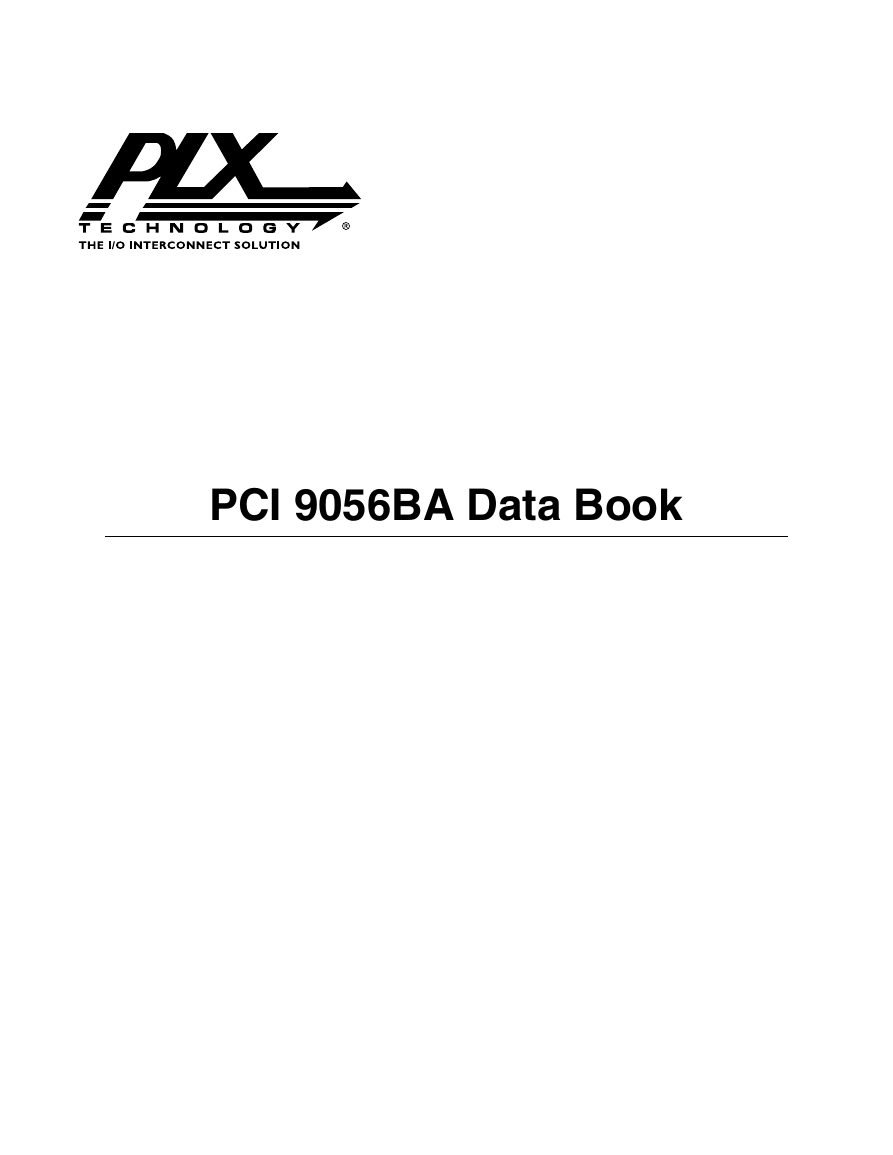

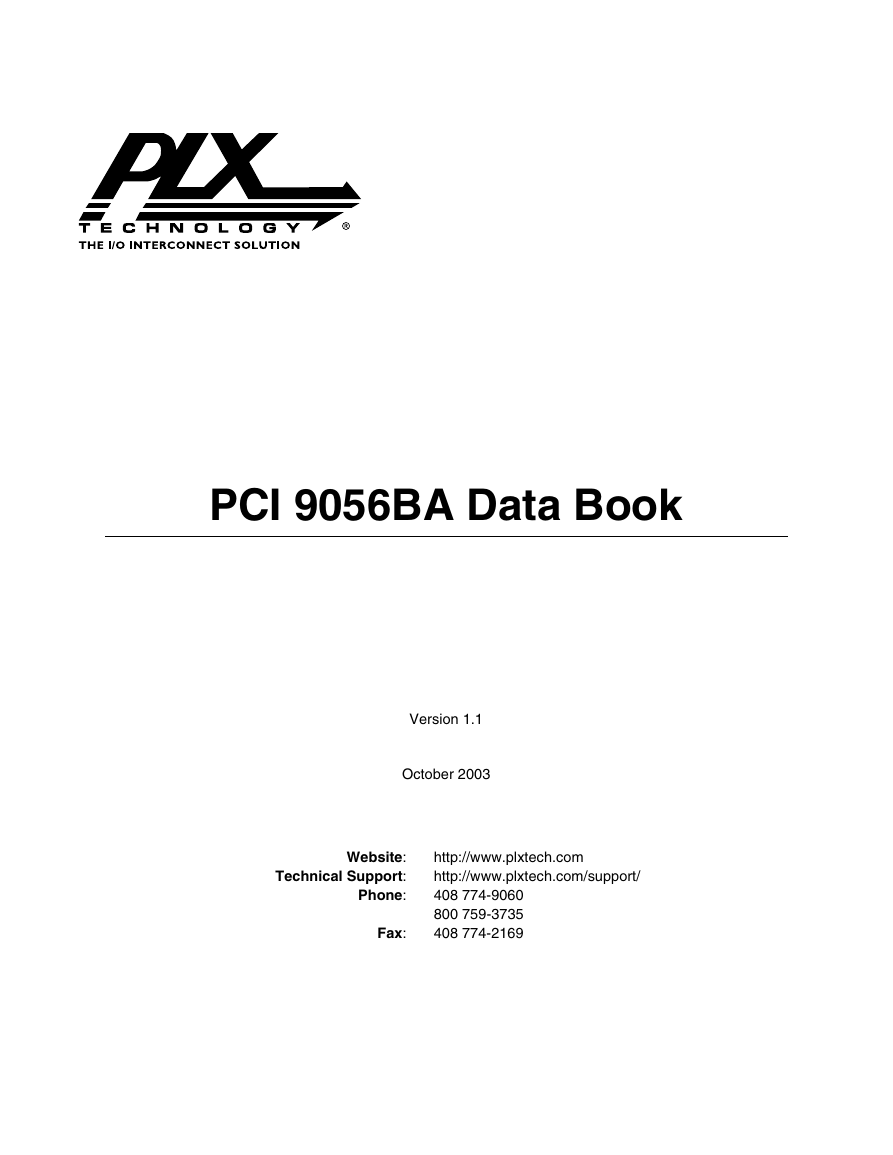
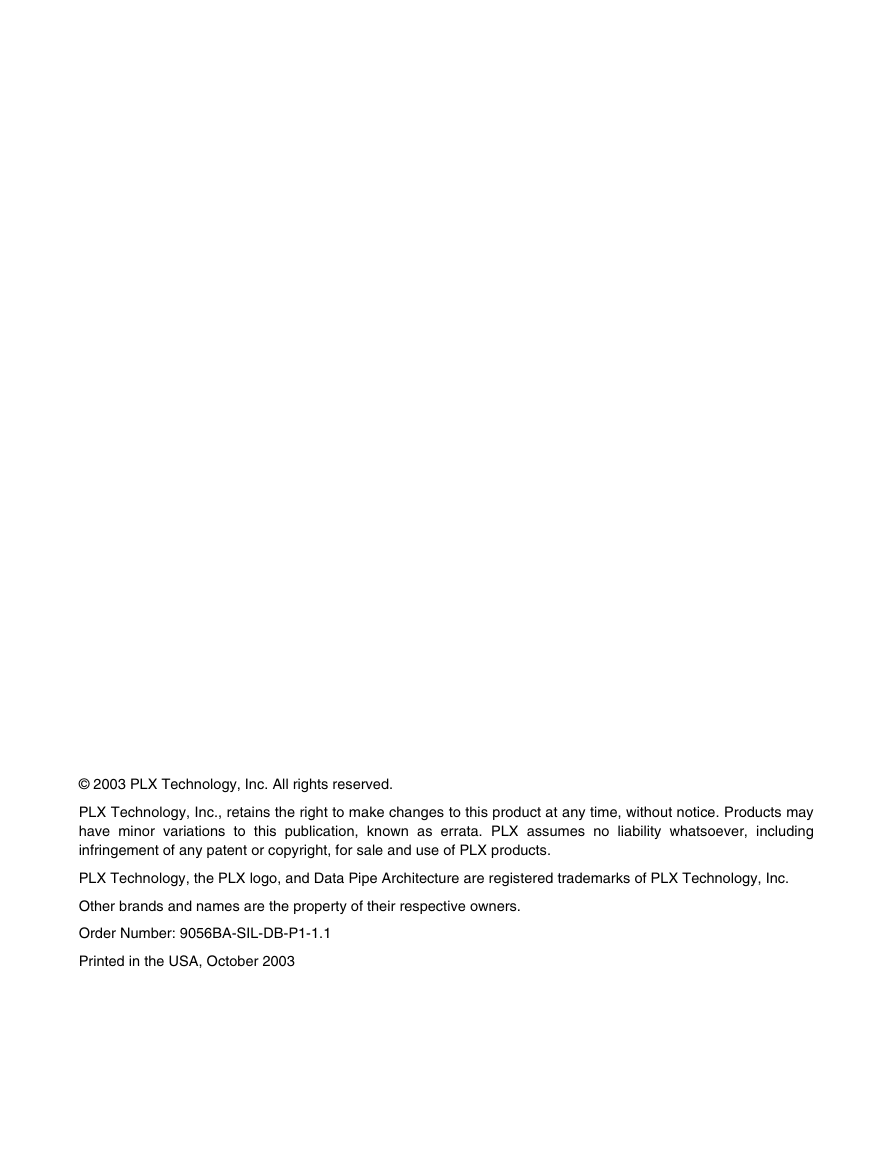

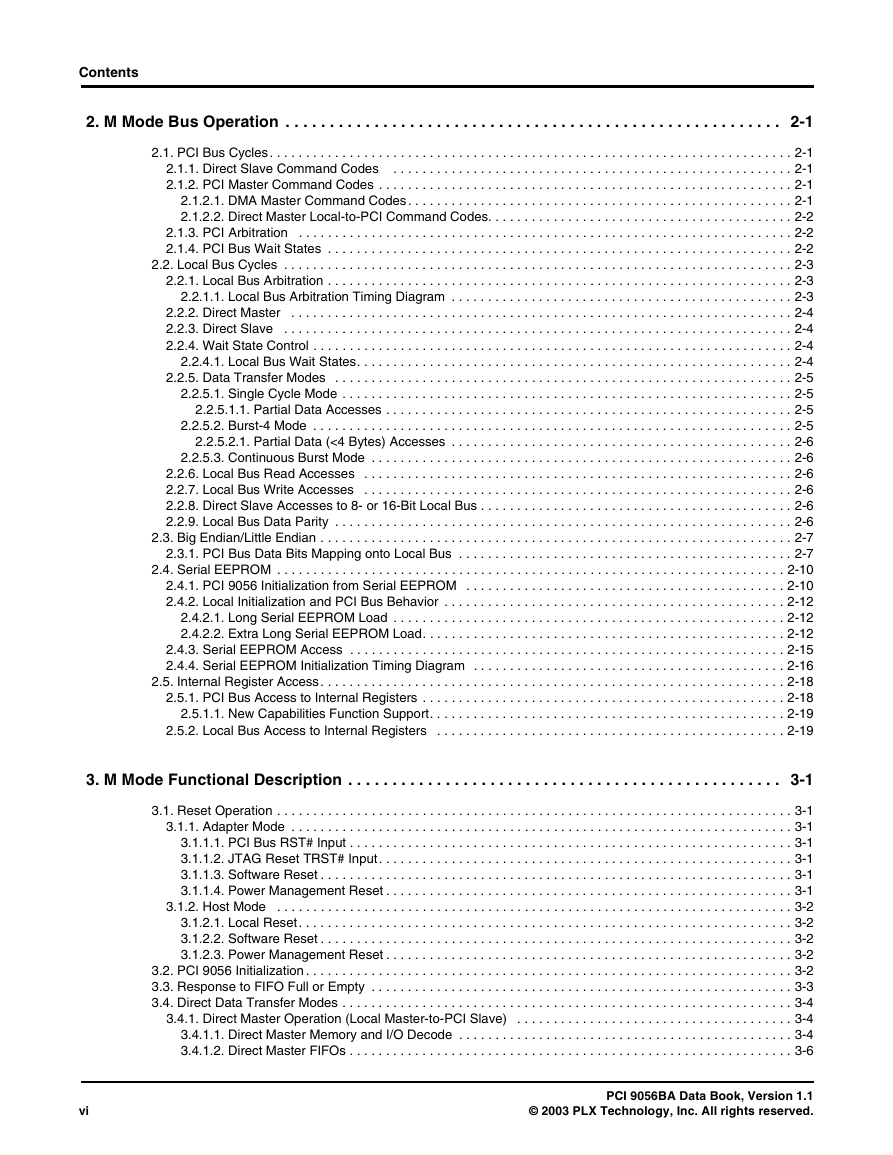
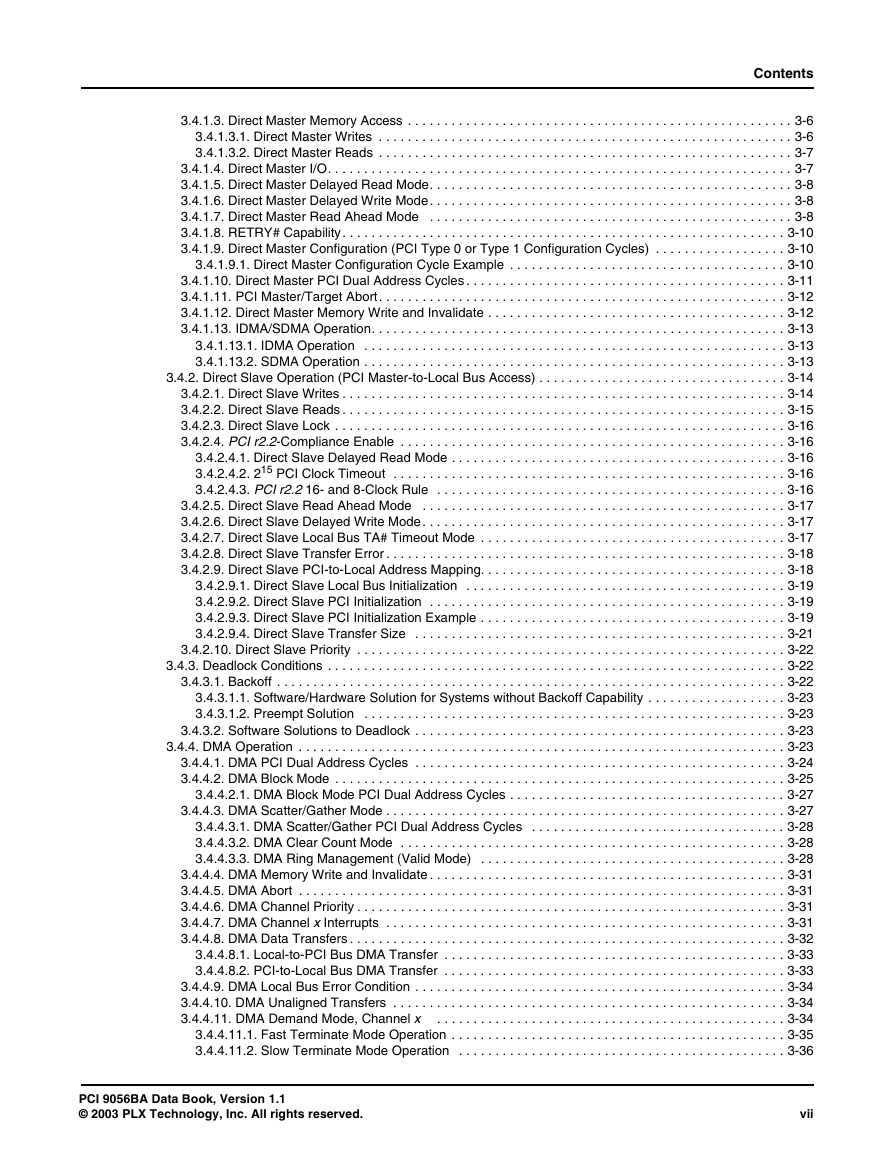
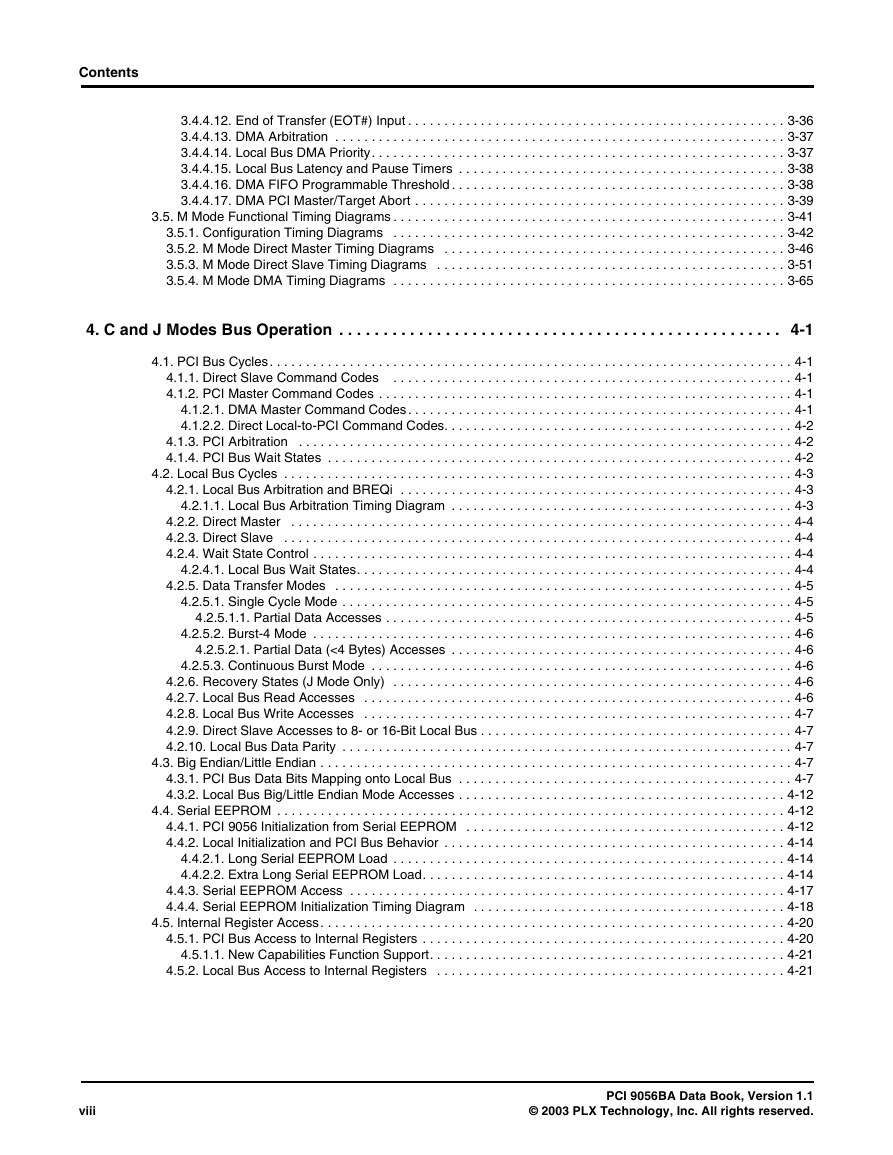








 2023年江西萍乡中考道德与法治真题及答案.doc
2023年江西萍乡中考道德与法治真题及答案.doc 2012年重庆南川中考生物真题及答案.doc
2012年重庆南川中考生物真题及答案.doc 2013年江西师范大学地理学综合及文艺理论基础考研真题.doc
2013年江西师范大学地理学综合及文艺理论基础考研真题.doc 2020年四川甘孜小升初语文真题及答案I卷.doc
2020年四川甘孜小升初语文真题及答案I卷.doc 2020年注册岩土工程师专业基础考试真题及答案.doc
2020年注册岩土工程师专业基础考试真题及答案.doc 2023-2024学年福建省厦门市九年级上学期数学月考试题及答案.doc
2023-2024学年福建省厦门市九年级上学期数学月考试题及答案.doc 2021-2022学年辽宁省沈阳市大东区九年级上学期语文期末试题及答案.doc
2021-2022学年辽宁省沈阳市大东区九年级上学期语文期末试题及答案.doc 2022-2023学年北京东城区初三第一学期物理期末试卷及答案.doc
2022-2023学年北京东城区初三第一学期物理期末试卷及答案.doc 2018上半年江西教师资格初中地理学科知识与教学能力真题及答案.doc
2018上半年江西教师资格初中地理学科知识与教学能力真题及答案.doc 2012年河北国家公务员申论考试真题及答案-省级.doc
2012年河北国家公务员申论考试真题及答案-省级.doc 2020-2021学年江苏省扬州市江都区邵樊片九年级上学期数学第一次质量检测试题及答案.doc
2020-2021学年江苏省扬州市江都区邵樊片九年级上学期数学第一次质量检测试题及答案.doc 2022下半年黑龙江教师资格证中学综合素质真题及答案.doc
2022下半年黑龙江教师资格证中学综合素质真题及答案.doc